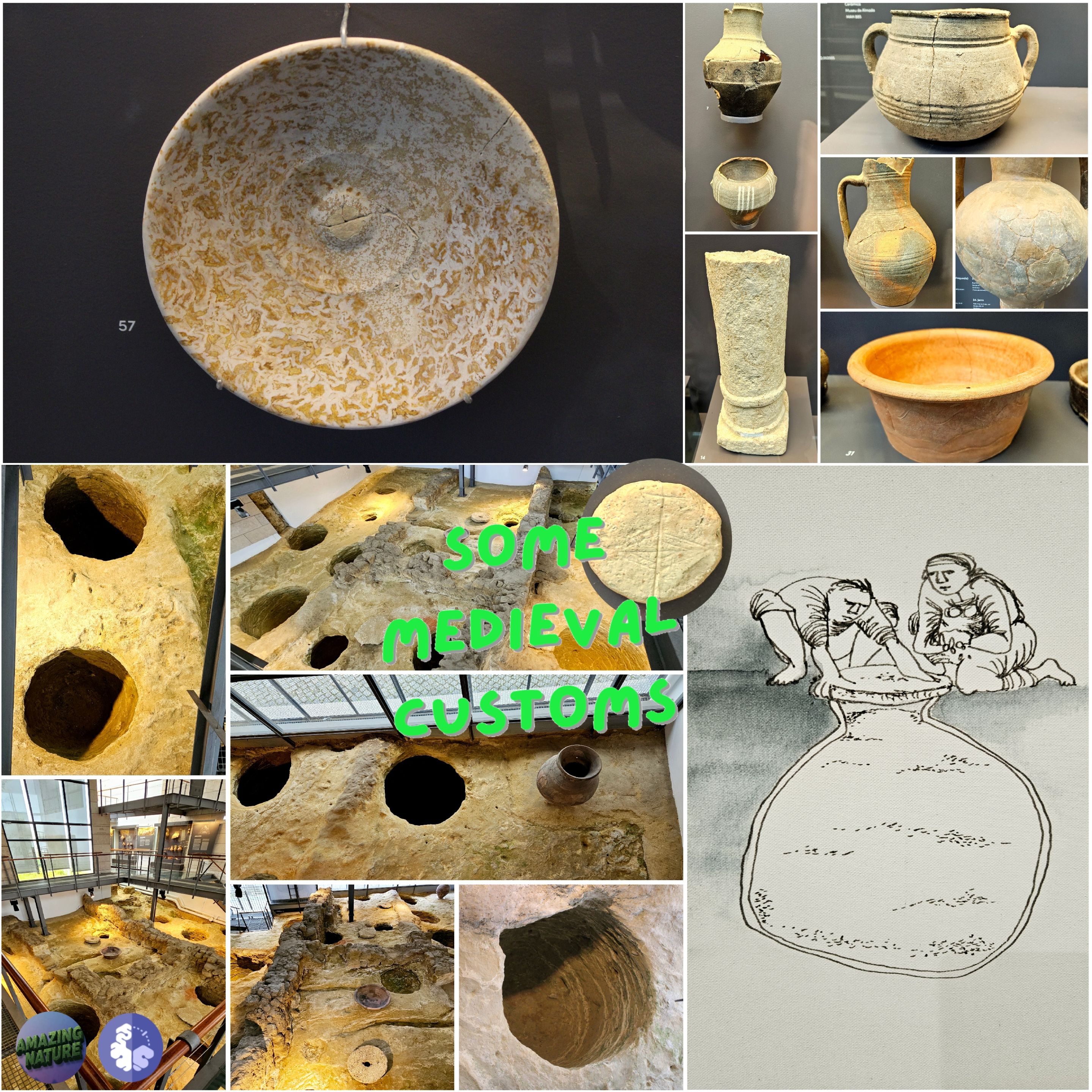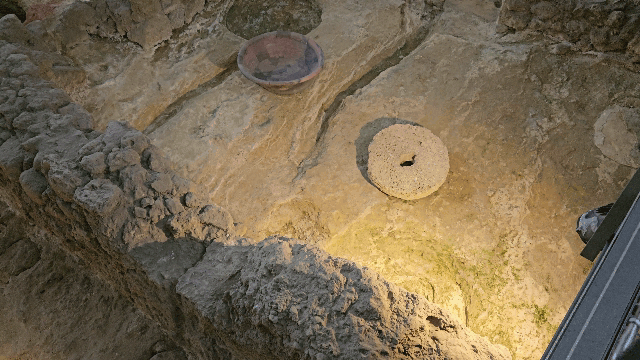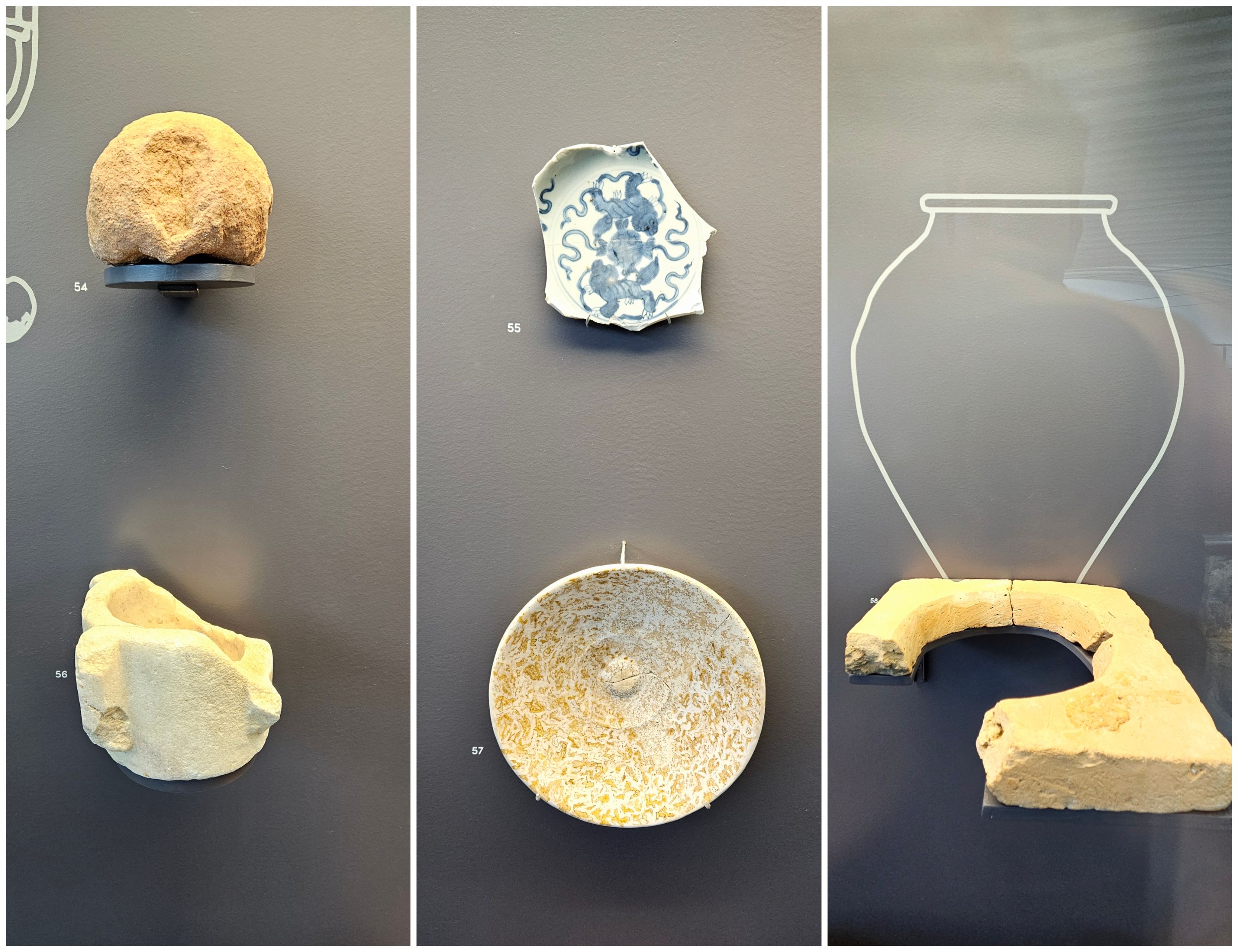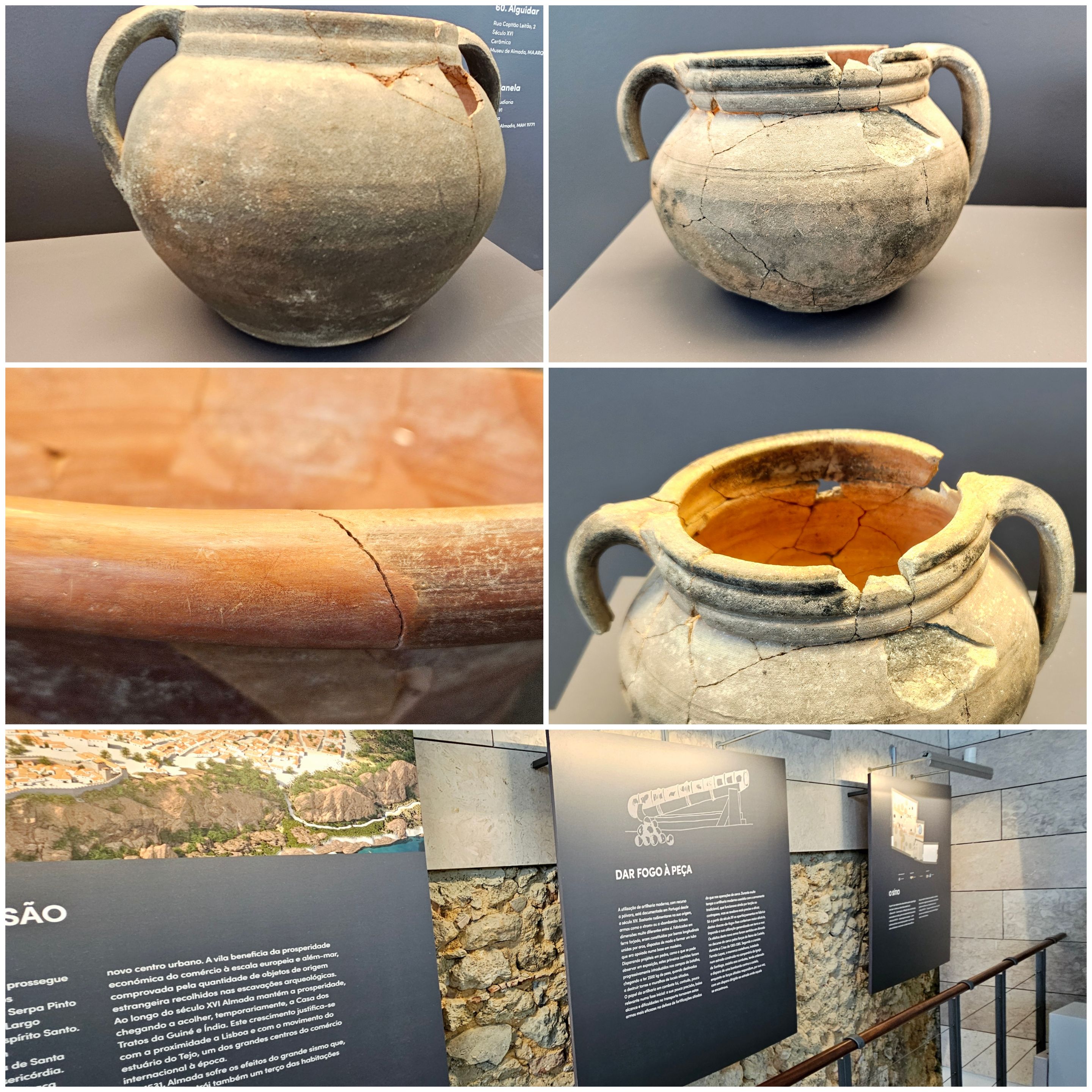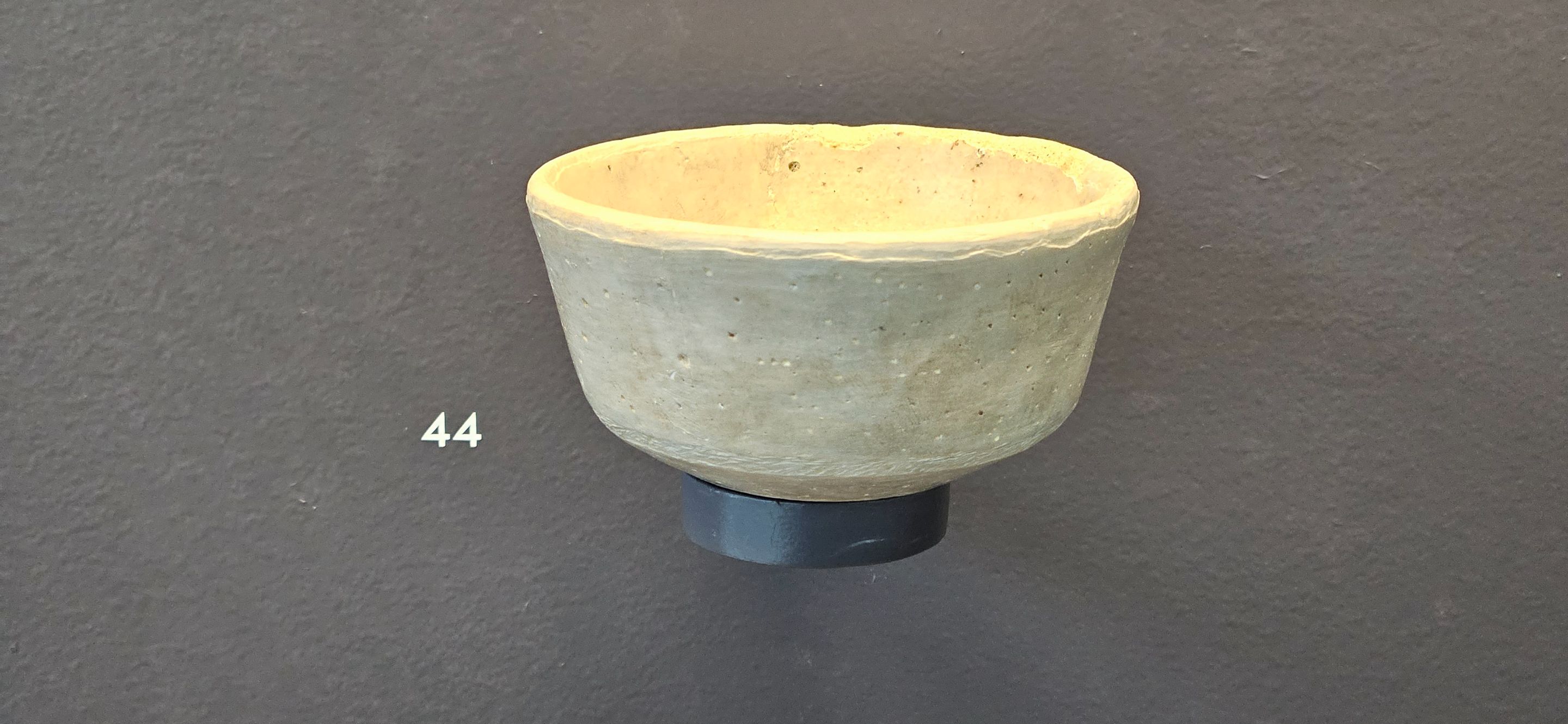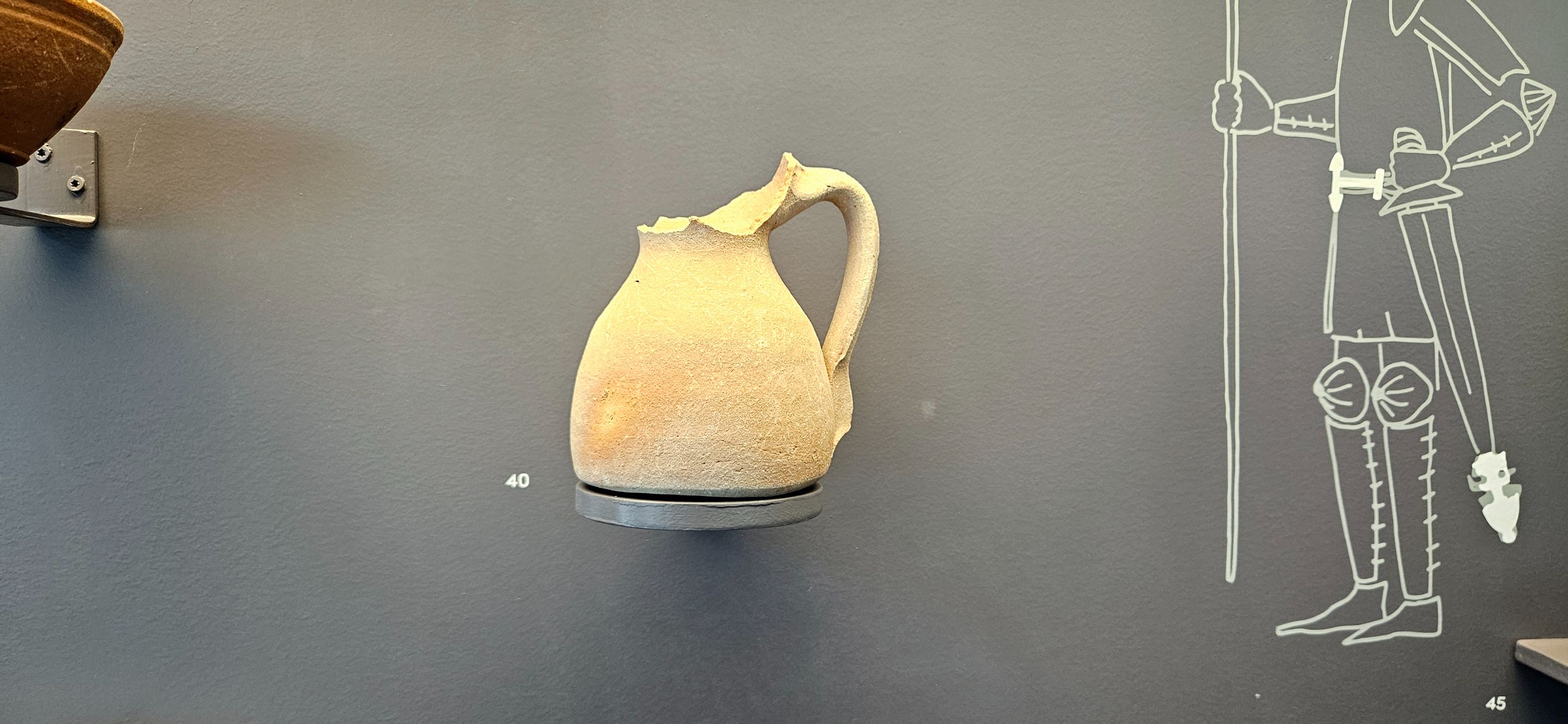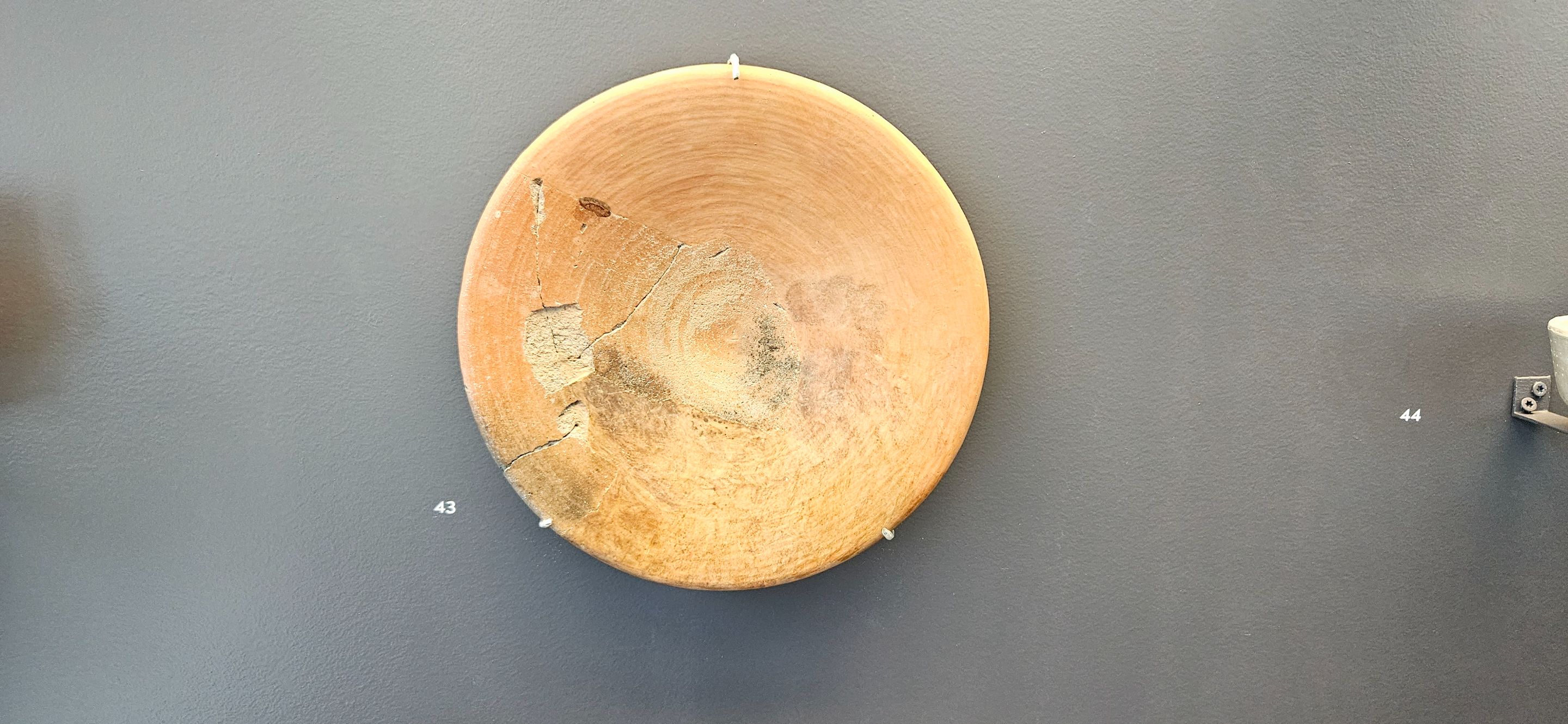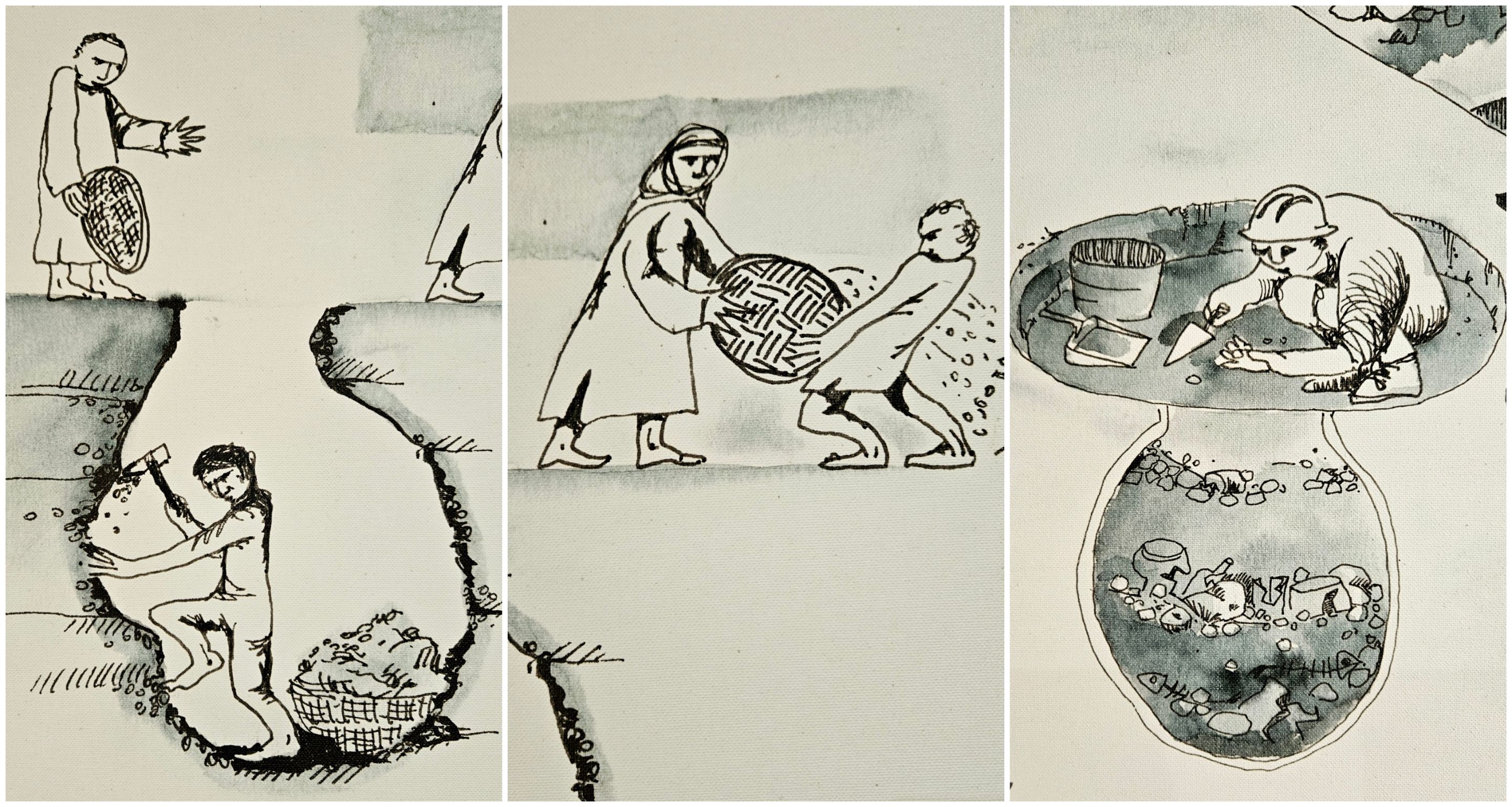Hello science-loving friends, today I'm bringing you a very interesting post where we'll visit a museum in my city called "Covas de Pão." The actual English translation of the museum's name is "Cave of Bread." We can roughly get an idea of what it's all about when we see the photos of the "holes" in the ground; they were presumably 8th-century warehouses! But let's see what they're all about in my post.🚩📕
¡Hola amigos amantes de las ciencias, hoy les traigo un post bastante interesante donde visitaremos un museo en mi ciudad la cual se llama: "covas de pão" en realidad la traducción en inglés del nombre del museo es: (cuevas de pan) y más o menos hacemos una idea de que se trata cuando vemos las fotos de los "huecos" en el suelo, presuntamente eran almacenes del siglo VIII! Pero vamos a ver en mi post de que se tratan.👩🏻🏫👨🏻🎓
Almada is a coastal city located on the banks of the Tejo River, it is not one of the first to be colonized, since its history is believed to date back to the 10th century with the occupation of the Moors, there is no evidence of the Romans settling here and creating population centers, so it is estimated that its peak of growth was possibly in the era of the 12th conquests, at its highest point a fortress was built and around it houses would begin to be built. It is believed that in 1147 was when the first conquest of the land of Almada took place, displacing the Moors to the south.
Almada es una ciudad costera que se encuentra en los márgenes del Rio Tejo, no es una de las primeras en ser colonizadas, ya que su historia se cree que se remonta al siglo X con la ocupación de los Moros, no hay evidencia de los Romanos asentarse aquí y crear núcleos de población por ello se estima que su auge de crecimiento fue posiblemente en la era de las conquistas XII, en su punto más alto se construyo una fortaleza y alrededor de ella se comenzaría a construir casas. Se cree que en 1147 fue cuando se realizó la primera conquista de la tierra de Almada desplazando los moros hacia el sur.
When we reached the 13th century and after the Christian conquest had been consolidated, people already felt safe living in the area of Palmela and there the city began to grow as the economic engine began to grow within the vicinity of the castle and the church. Everything grew slowly and many product transactions were carried out in the streets. The settlers were exploiting the resources and lands available in Almada and some were settling until the 14th century towards the coast near the Atlantic.
Cuando llegamos al siglo XIII y luego que se ha consolidado la conquista cristiana, ya las personas se sentían seguras de habitar la zona de Palmela y allí comienza a crecer la ciudad al comenzar a crecer el motor económico dentro de las inmediaciones del castillo y la iglesia todo fue creciendo de forma lenta y se realizaron muchas transacciones de productos en las calles, los pobladores fueron explotando los recursos y las tierras disponibles en Almada y algunos fueron asentándose hasta el siglo XIV hacia la costa próximos del atlántico
Throughout the 14th century at the end of the medieval era, the town began to expand towards the bridge, at this time the church was built exponentially, the city expanded towards the surrounding areas until the 15th century, but we have already summarized a little the history of Almada, however, we have not yet described the customs, nor have we explained the meaning of the holes in the ground.🌍
A lo largo del siglo XIV en finales de la era medieval, la villa comenzó a expandirse hacia el puente, en esta fecha se construyo la iglesia exponencialmente, la ciudad fue expandiéndose hacia los alrededores hasta el siglo XV, pero ya hemos resumido un poco la historia de Almada, sin embargo, aún no hemos descrito las costumbres, y tampoco hemos explicado el significado de los agujeros en el suelo.👩🏻🏫🤩
Source: Almada Museum

Some customs of the people of Almada🗺️👨🏻🎓 / Algunas costumbres del pueblo de Almada📕🧭
 *Glasses, jugs, cups, coins, decorative objects*
*Glasses, jugs, cups, coins, decorative objects*
According to the evidence collected by archaeologists, a series of population phases throughout history were established in this area where I am currently living, all thanks to all the objects collected.
12th Century: During this phase, the "covas de pao" or bread pits were built, which were used to store grain.
=================================================================================
Según las evidencias recolectadas por los arqueólogos, se pudo crear un conjunto de fases de población a lo largo de la historia en este local donde estoy, todo gracias a todos los objetos recolectados.
Siglo XII: En esta fase se realizaron la construcción de las "covas de pao" o pozos de pan! que se utilizaron para almacenar el cereal.
Source: Almada Museum

Later, in the 14th-15th century, evidence of a village was discovered above the bread pits, which is an important indication that in the medieval era, people no longer practiced the culture of storing grain in pits.
Posteriormente en la fase del siglo XIV-XV se descubrió evidencias de una villa encima de los pozos de pan, esto es un indicativo importante que en la era medieval ya las personas no practicaban la cultura de guardar los cereales en los pozos.
Source: Almada Museum


The science behind these bread pits was acquired by the Moors. I'm not sure if they copied it from the Romans because I know the Romans used silos, however, this practice dates back to pre-Neolithic times! I have an idea that I once visited a Roman archaeological site and one of the houses had a storage pit. This was to safeguard the winter grain from pests. They covered it with stone wheels so no pests could get in.🚩🧭👩🏻🏫
La ciencia detrás de estos pozos de pan fueron adquiridos por los Moros, ¡no tengo seguridad si ellos lo copiaron de los Romanos porque sé que los Romanos utilizaban silos, sin embargo, esta práctica se remonta desde el pre-neolítico! Tengo idea que en una ocasión visite una villa arqueológica romana y una de las casas tenían un pozo para almacenar, esto era para salvaguardar el cereal de invierno y de plagas lo cubrían con ruedas de piedras y ninguna plaga podría entrar.👨🏻🎓
Source: Almada Museum


Between the 16th and 20th centuries, this is the most critical part of the history of the bread pits. Here they had already been covered by rubbish, some were forgotten because houses were built on top of them. When archaeologists in the 20th century made discoveries, they came across layers of rubbish.👩🏻🏫🧭
Entre los siglos: XVI-XX esta es la parte más crítica de la historia de los pozos de pan, aquí ya habían sido tapados por basura, algunos pasaron al olvido porque construyeron casas encima de ellos, cuando los arqueólogos en el siglo XX hicieron los descubrimientos se toparon en capas de basuras.🚩🤩
Source: Almada Museum

A curious fact is that they collected cannonballs among the bread pits and it makes sense because a few meters away there was a fortress where the place was probably defended against the Spanish or French.👨🏻🎓👩🏻🏫
Un dato curioso es que recolectaron balas de cañones entre los pozos de pan y tiene sentido porque a pocos metros había una fortaleza donde probablemente se defendió el lugar contra los españoles o franceses. 💂🏻♀️💂🏻♂️
Source: Almada Museum


The first section of the excavation is called Al-Andalus, which corresponds to the Arab occupation; the second phase is the Portuguese conquest (Christian kingdom); and finally, the phases of the city's expansion (consolidated city).👩🏻🏫💂🏻♀️
La primera sección de la excavación tiene como nombre; Al-Ándalus que corresponde a la ocupación arábica, la segunda fase es la conquista de los Portugueses o (reino cristiano), por último las fases de expansión de la ciudad (ciudad consolidada).👨🏻🎓🤩


THANKS FOR READING ME (PHOTOS AND VIDEOS OF MY PROPERTY) / GRACIAS POR LEERME FOTOS Y VIDEOS DE MI PROPIEDAD🙂🧠🦾👍

